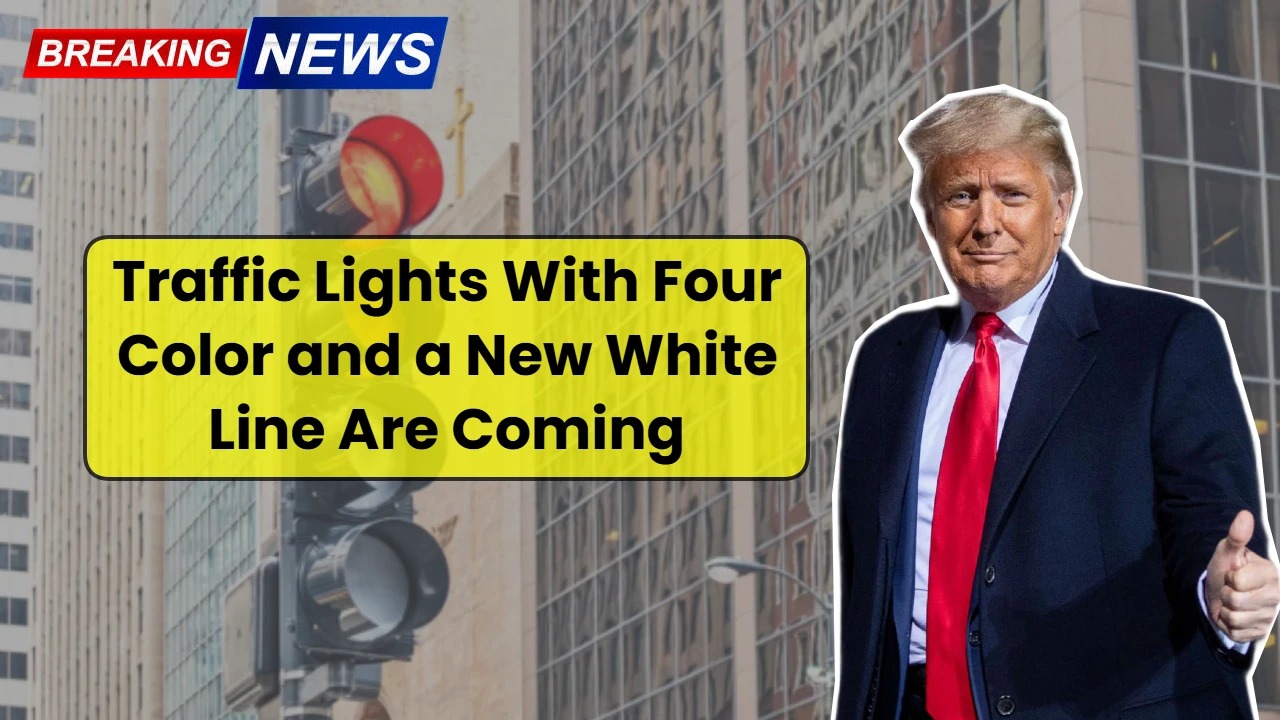A revolutionary change is coming to one of the most familiar symbols of modern transportation — the traffic light. For more than a century, drivers have followed the red, yellow, and green signals that dictate when to stop, slow down, and go. But now, researchers and transportation authorities have confirmed that a fourth color — white — will soon be added to traffic lights. This new signal isn’t just cosmetic; it’s part of a major technological shift designed to integrate autonomous vehicles (AVs) into existing traffic systems and transform how humans and machines share the road.
Overview (Quick Table)
| Detail | Information |
|---|---|
| New Feature | Addition of a fourth “White” traffic light |
| Purpose | To coordinate communication between autonomous and human-driven vehicles |
| Implemented By | U.S. Department of Transportation (with support from major research institutions) |
| Testing Locations | Virginia, Florida, Michigan, and select smart city zones |
| Expected Rollout | 2025–2027 |
| Primary Benefit | Improved traffic flow and reduced congestion |
Purpose of the Fourth (White) Light
The introduction of the white light is not just a color update — it represents a communication revolution between vehicles and infrastructure. The white signal is designed for autonomous vehicles, allowing them to coordinate movement among themselves while signaling human drivers to simply “follow the flow” of traffic around them.
When active, the white light will indicate that autonomous vehicles are in control of traffic coordination at that intersection. Human drivers won’t need to interpret complex signals; instead, they’ll be guided by the behavior of nearby self-driving cars.
How the New Four-Color Traffic System Works
- Red Light – Stop, as usual.
- Yellow Light – Prepare to stop.
- Green Light – Go when clear.
- White Light – Autonomous coordination in progress; human drivers follow the car ahead and proceed carefully.
This fourth light acts as a command signal from intelligent traffic systems, triggered when a sufficient number of connected or autonomous vehicles are detected near the intersection.
The Technology Behind It
The white light system is built upon vehicle-to-everything (V2X) communication — a network allowing cars to talk to each other and to the traffic infrastructure. When autonomous vehicles approach a smart intersection, they communicate speed, position, and intent data to a central controller.
That controller then determines the optimal traffic movement pattern and activates the white light, signaling that autonomous cars will now guide the overall traffic flow. This process has already been successfully demonstrated in simulations by researchers at North Carolina State University, showing potential to reduce waiting times and fuel consumption by more than 30%.
Why This Change Matters
- Reduced Traffic Congestion: By letting autonomous vehicles coordinate movement, the system eliminates unnecessary stops and idle time.
- Improved Safety: Machine communication reduces human reaction errors that often cause accidents.
- Lower Emissions: Shorter idling times and smoother driving patterns help cut carbon emissions.
- Future-Proofing Infrastructure: The white light is part of preparing cities for full-scale autonomous driving adoption over the next decade.
Impact on Human Drivers
For now, human drivers won’t need to learn complex new rules. The white light serves as a “follow-the-leader” signal — when it appears, drivers should proceed cautiously in sync with nearby autonomous vehicles. As more smart intersections are deployed, drivers will see smoother traffic patterns and shorter commute times.
Expert Insights
Transportation engineers say the change is one of the biggest upgrades since the introduction of electric signals in the 1920s. According to experts, “the white phase doesn’t replace human control — it enhances it by allowing automation to manage high-density traffic more efficiently.”
Researchers also emphasize that this system will only work when a certain percentage of vehicles are connected or autonomous, which is why the rollout will begin in test zones before becoming nationwide.
Rollout and Implementation Timeline
- 2025: Pilot programs in Virginia and Florida.
- 2026: Expansion to select cities equipped with smart intersection infrastructure.
- 2027–2028: Broader deployment across the U.S. and parts of Europe, with public awareness campaigns for drivers.
Final Takeaway
The addition of a fourth color — white — to traffic lights marks a historic turning point in road transportation. It bridges the gap between traditional driving and the autonomous future, ensuring that both humans and AI can safely coexist on the road. While it may take time before every intersection is upgraded, this innovation will soon redefine the rhythm of driving — faster, safer, and smarter than ever before.
FAQs
1. When will the white light appear at intersections?
Pilot programs are already underway in several U.S. states, with wider adoption expected from 2025 onward.
2. What should human drivers do when they see the white light?
Simply follow the vehicle ahead and proceed cautiously — autonomous systems will manage the flow safely.
3. Will traditional red, yellow, and green lights still exist?
Yes, the three existing colors will remain in place. The white light will only appear when autonomous coordination is active.
Official Source: U.S. Department of Transportation and North Carolina State University Transportation Research.

